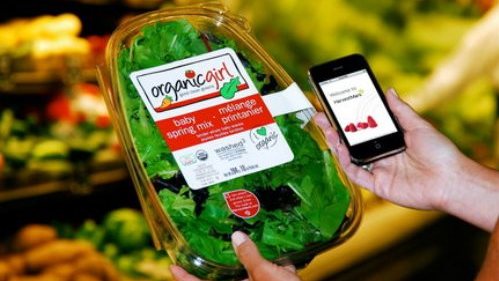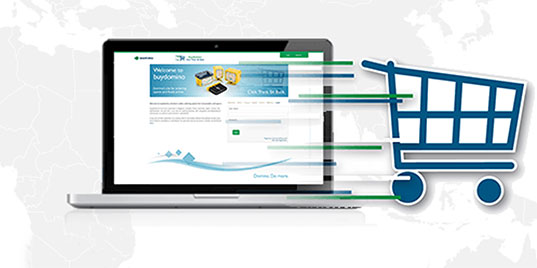We’ve all now probably heard some insight into the future of packaging such as sustainability, smart packaging, degradable single use packaging and the continuing rise of e-commerce, but what do this all really mean and how will it affect you both as a customer and as someone in the packaging industry? Let’s explore some of these topics and how they will shape and form your business and your consumer behavior moving forward. Of course, each of these are important and can be expanded extensively in their own blog, but we understand your time is valuable, and wanted to keep it fairly high level for now.
Sustainability
According to a Future Market Insights analysis, sustainability is the most important driver for intelligent packaging growth. Translation? It's here to stay, and only will continue to be driven by retailer and consumer demand.
One of the simpler definitions of sustainability is "meeting the needs of the present without compromising the ability of future generations to meet their needs." Many large MNCs have already adopted a formal policy regarding the pursuit of sustainable packaging for their products. This might entail such metrics as reducing the amount of energy used to produce and package their product. It might also include a reduction in the amount and type of packaging materials used, perhaps shifting from non-recyclable multi-layer films to single layer, recyclable films. If certainly plastics are necessary for barrier reasons, they may look to include more recycled materials into their process versus virgin materials.
Another facet of sustainability is source reduction. Source reduction is the reduction and ultimately removing packaging from products, such as from bulk food items and is a lucrative way of minimizing the materials in circulation and ultimately the environmental impact of packaging. This might involve the redesign of an existing package to trim down the amount of plastic, paperboard or corrugate. It could also be eliminating secondary and tertiary packaging and designing a primary package that can handle the entire distribution cycle.
With a global shift toward fighting climate change, the way we approach packaging is set to grow and change. Rather than being an alternative option, environmentally friendly and sustainable packaging is only going to become more important.
Smart Packaging
Smart packaging refers to packaging that can do “intelligent” functions such as track the product, sense an attribute of the packaged food or its immediate environment (e.g., pH, temperature), and communicate it to the user (such as manufacturer or consumer). It describes a large category of packaging that leverages technology to provide functionality that goes beyond simply containing a product. However, note that there are several different terms being used in the market today that all speak to the driving changes on how the supply chain, manufacturer, retailer and consumer interact.
- Smart packaging: Packaging that serves a purpose other than protection and containment.
- Active packaging: Packaging that actively boosts the product and its potential usage.
- Intelligent packaging: A packaging system that gathers or transmits the data about the product.
Some examples of smart packaging that are currently in the marketplace includes:
- Milk containers equipped with special carton liners designed to extend the shelf life of perishable contents
- Meat packaging labeled with color-changing labels indicating the contents is beyond their expiration date.
- Produce packaging capable of reducing food odors
- Time-temperature sensors providing feedback about perishable deliveries
- Antimicrobial packaging used to inhibit germ growth and spoilage
- Coded packages equipped to interact with smartphones, sharing anti-counterfeit protection, marketing messages, and direct consumer engagement
The future of smart packaging will only enhance the consumer experience. Imagine a cereal carton that might actually play a cartoon while your child is enjoying their morning bowl of cereal. We might see packaging talking directly to consumers with on-pack digital chips linked to their smartphones. The customer wouldn’t even have to look for a code or tag to scan, the product will send the information by itself to their smartphone, to inform them of the expiration date or how to recycle the product for example.
All of these current or future versions of smart packaging are designed to deliver products safely to the consumer, provide additional insight or information about the product and perhaps even offer on-the-spot discounts, similar to the paper coupons used today.

Degradable Packaging
The idea here is to have a second use for the packaging. Compostable or biodegradable packaging is a trend that allows for a second life for packaging in our gardens. More formally, degradable packaging refers to the ability of materials used in the packaging to break down and return to nature. For packaging products or materials to qualify as degradable, they must completely break down and decompose into natural elements within a short time after disposal, which is typically a year or less.
Degradable packaging is here now, but will continue to grow and expand. Paper, cardboard and corrugate is reusable, recyclable and biodegradable. There are a number of advantages to this type of packaging product, including the fact that they are readily available and cost efficient. Many packaging manufacturing companies offer an environmentally friendly option which has been created using a high proportion of recycled paper. Items made from corn starch are biodegradable and are ideal for items which have a limited use, such as takeout food containers. Corn starch packaging biodegrades and has a limited negative impact on the environment. Certain versions of bubble wrap are made from recycled polythene and bubble wrap which is completely degradable. Biodegradable plastic is now commonly used in plastic bags and is also used in other items such as envelopes used for bulk mailing. This type of plastic starts to decompose when it is exposed to daylight and is a good alternative to traditional plastics.
Given that a plastic bag can take 10 to 20 years to degrade, a plastic film container 20 to 30 years, Styrofoam cups up to 50 years and the plastic water bottle you use almost every day, up to 450 years, the opportunities for degradable packaging could have a drastic impact on the current waste stream.

E-commerce
Anyone that lives in a neighborhood setting certainly can see the rise in the last few years on the number of Amazon, UPS and FedEx trucks delivering anything from frozen steaks to auto parts to your home. According to a Smithers report, the global market for e-commerce packaging is currently estimated at $49.2 billion and growing at an annual rate of 15% for a projected value of $98.2 billion by 2025. This means a potential drastic shift from glitzy packaging on the shelf to packaging that serves its purpose, in that it protects your packaging and provides vital or regulatory information and eliminates unnecessary graphics or extra packaging. This also means that the mountain of corrugate boxes that some of us have will only get taller. The good news on that is that corrugate is recyclable and renewable, so does make a good choice for single use packaging. The bad news is that not everyone will recycle, so there will certainly be some increase in the amount of corrugate heading for the landfill.
Drone delivery of your product will also rise in the next 3-5 years. This has the possibility to reduce the amount of secondary and tertiary packaging needed to get a certain product to your home intact and safe. The healthcare industry is best positioned to bear the early fruit of drone delivery services. Given the small package sizes of prescription and medical deliveries, they are ideal for drone delivery services, as drone operators are limited by the FAA to carrying cargo that weighs under 55 pounds.
E-commerce has and will certainly continue to change our lives and consumer behaviors moving forward and continually reshaping the consumer landscape.
The wrap-up
They say the future is uncertain, but the one thing we can be certain of is that these "trends" are here to stay and will only continue to evolve. Making sure you are staying abreast of the direction these take is a critical piece of the supply chain puzzle.
No matter what the future holds for the packaging industry, Domino will have you covered with a full line of coding and marking equipment that will continue to adapt to meet the needs of the industry.
Looking for more insight? I invite you to read some of the various other blogs and articles I have penned recently. Click HERE to discover more.